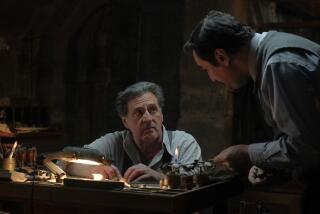Book review: ’13 rue Thérèse’ by Elena Mauli Shapiro
When Elena Mauli was a little girl growing up in Paris in the 1980s, an old woman named Louise Brunet lived alone in an apartment above her family. When she died, no one came to collect her things.
The landlord allowed the other tenants to take whatever they liked.
Elena’s mother chose a box of mementos, which Elena has carried with her every since.
This novel is based on the contents of that box. It is a lovely book, full of facsimile reprints of yellowing old letters, with their looping, elegant handwriting; old photographs and evocative ephemera — gloves, bits of music, clothing labels, coins. In this, it resembles the work of the great book artist Nick Bantock, whose “Griffin & Sabine” trilogy, complete with letters the reader could pull out and unfold, was a great success in the 1990s. “13 rue Thérèse” also includes embedded Q.R. (quick response) codes, which the reader can use, through the book’s website, to enter the world of the novel — explore the house and the neighborhood on Google maps, listen to the music of Edith Piaf or Maurice Chevalier, and read recipes that enhance the full sensory experience of this love story.
And what a story it is! Josianne is a department secretary at a university in France. When Trevor Stratton, a translator and scholar of French literature from a California college comes to teach at the university, Josianne hides the box in his office so that he will come upon it when he first moves in. Stratton is overwhelmed by the contents, thrust into a puzzle that captures his imagination. Who were the people in the photos and how do the faces relate to the letters?
What stories swirled around the objects?
He begins with a letter dated 1915 from a man named Camille asking for a girl named Louise’s hand in marriage. There are two photos of the same man taken 50 years apart, a postcard from a father to his daughter from the front lines of World War I, a rosary, a tiny calendar-diary and two calling cards. With these clues, Stratton, who has become ill with fever and taken to bed, uses all his skills as a translator and researcher to put flesh on the bones of the story. As he unpacks the box, more clues emerge.
In his delirious state (Josianne brings soup and smiles mysteriously when Stratton mentions his artifacts), Stratton believes that he inhabits the bodies of Louise, Camille, Louise’s father, Louise’s lover Monsieur Langlais and her husband, Henri Brunet. This is, of course, what translators, when they are lucky and good at their work, must do.
It is interesting how different the presence of the images, the pictures of the things in the story, makes the reader’s experience of the story. It is as though the story enters one’s memory, fixed there by the almost tangible objects. Even the writing recedes into the background, tumbled over in the reader’s desire to learn more information about Louise and her lover. The story feels familiar, the reader’s ancestor’s stories bubble up — wars, love affairs, deaths and small tokens gripped through events and long after. The website becomes a way to prolong the feeling of the story. Left brain and right snap to attention. It is almost, dare one say it, like watching a movie.
Salter Reynolds is a Los Angeles writer.
More to Read
The biggest entertainment stories
Get our big stories about Hollywood, film, television, music, arts, culture and more right in your inbox as soon as they publish.
You may occasionally receive promotional content from the Los Angeles Times.






